Pencils: Common in the Old West?
Pencils: Common in the Old West?
.
Yes.
.
That doesn’t necessarily mean they were as plentiful as today, where my kitchen junk drawer holds roughly 7 thousand of them, and my the pen cup on my desk hosts another two dozen. But in the days of the Old West, pencils weren’t luxury items, either.
.
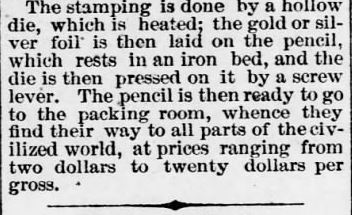
Closing paragraph of an article “How Pencils Are Made” published in The Wynadott Herald of Kansas City, Kansas on 13 June, 1872.
.
This article quotes the price ranging from $2.00 per gross (A gross = 144 count). That’s less than two cents per pencil, on up to fourteen cents each.
.
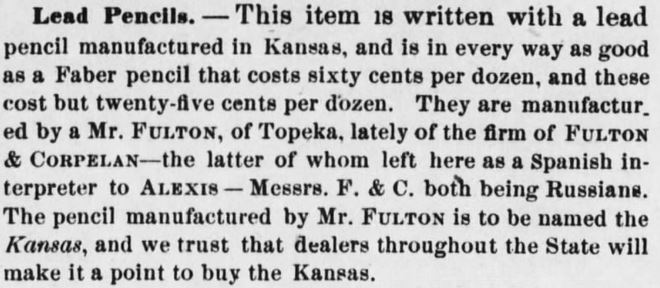
Kansas Farmer, Topeka Kansas, 1 April 1872.
.
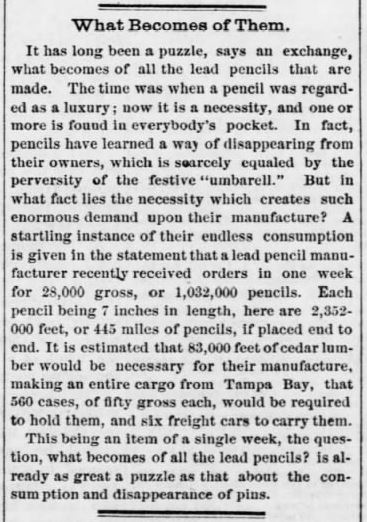
What Becomes of All the Lead Pencils? From The Osage County Chronicle of Burlingame, Kansas on March 17, 1876.
.
Portable Pencils
.
In many ways, pencils were much more portable than pen and ink. Prior to the invention and common usage of fountain pens, people literally had to have a separate bottle of ink to dip pen nubs in. Messy business, that.
.
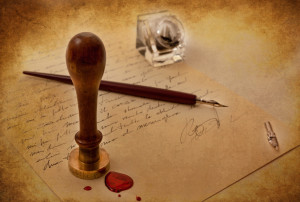
.
Victorian Pencil Lead
.
A significant, dense (the only of its kind, to date, in fact) natural repository of solid graphite was found at Cumbria in England in the 1500’s. Graphite is not lead, but chemists at the time didn’t know that. Hence the term “lead pencil”, though graphite is a form of carbon and not related. Believe it or not, people did contract lead poisoning from graphite pencils…but not because of the core. Paint used in the 19th century contained lead and those prone to chewing their pencils would ingest the lead paint, causing lead poisoning.
.
Colonial Americans imported pencils from England (and Germany via England), though eventually turned their inventive natures on the need for locally produced goods. “William Munroe, a cabinetmaker in Concord, Massachusetts, made the first American wood pencils in 1812. This was not the only pencil-making occurring in Concord. Henry David Thoreau discovered how to make a good pencil out of inferior graphite using clay as the binder; this invention was prompted by his father’s pencil factory in Concord, which employed graphite found in New Hampshire in 1821.” [Source]
.
Pencils and the Industrial Revolution
.
Factories harnessed the industrial revolution machination and quickly turned the time-exhaustive work of pencil-making into a mass-production enterprise. Early and significant pencil makers in the young United States were Joseph Dixon (Dixon Ticonderoga Co.) and John Eberhard Faber (Eberhard Faber Co.).
.
Any guesses when erasers were first attached to pencil ends?
.
Come on. Guess.
.
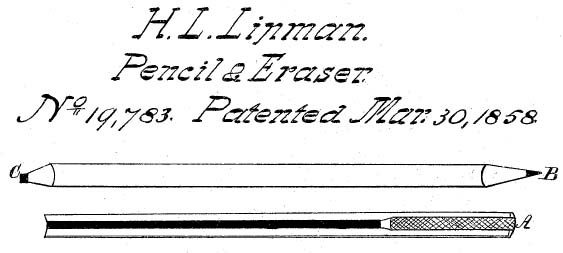
Hymen Lipman Pencil Eraser Patent, 1858. Image: Public Domain
.
1858. That’s early.
.
In the 1860‘s and 1870‘s, pencils were mass-produced in the United States, driving prices down and increasing the abundance.
.
“The demand for pencils seems to have been growing at an unprecedented rate at the time, and in the early 1870s it was estimated that over 20 million pencils were being consumed in the United States each year.” [Source]
.
The first mass-produced pencils were natural and unpainted–all the better to show off the high-quality wood casings (and make it obvious premiere red cedar was used). By this time, manufacturers started imprinting brand names on pencils. One major, determined-to-be-the-best manufacturer began painting their pencils their trademark bold yellow, thus informing consumers of superior quality at first glance. It wasn’t long and imitators also painted their pencils yellow.
.
Mechanical Pencils were a 20th Century development, though, right?
.
Nope. Early 19th.
.
“A mechanical (or “propelling”) pencil was patented by Sampson Mordan and John Isaac Hawkins in Britain in 1822.
For a history and superb pictures of early mechanical pencils, see Deborah Crosby, Victorian Pencils: Tools to Jewels, Schiffer Publishing Ltd., Atglen, PA, 1998. Crosby (1998, p. 62) states that “Huge numbers of patents were issued for a variety of advancements or improvements in propelling pencils during the nineteenth century (between 1820 and 1873, more than 160 patents were listed pertaining to mechanical pencils).”
In the U.S., patents for mechanical pencils predate the earliest patents for wood-cased lead pencils or pencil sharpeners.”
.
[Source]
.
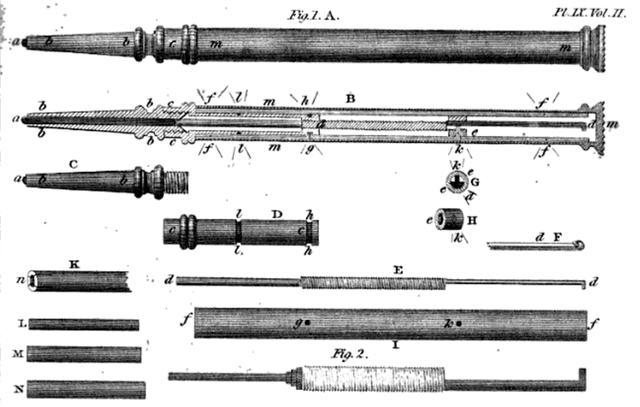
Detail of the specification of the patent granted in December 1822 to Sampson Mordan and John Hawkins, for improvements on pencil-holders. The first patent for a refillable pencil with lead-propelling mechanism was issued to Sampson Mordan and John Isaac Hawkins in Britain in 1822. Image: Public Domain.
.
And there you have it. A brief look at pencils in the American Old West.
.
Related Articles
.
.
Updated May 2022
Copyright © 2016 Kristin Holt LC
Pencils: Common in the Old West?


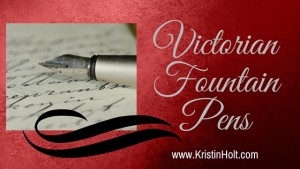
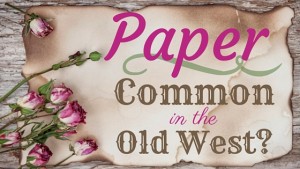
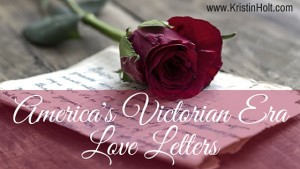









Thank you for this post.
The little things do count. And I love when I learn something I didn’t know I needed to know for my own writing.
Thanks, Alisa–
I agree. The little things do count. Isn’t it fun learning all we can learn about the 19th Century (to ensure our own writing is accurate)?
Happy Writing,
Kristin